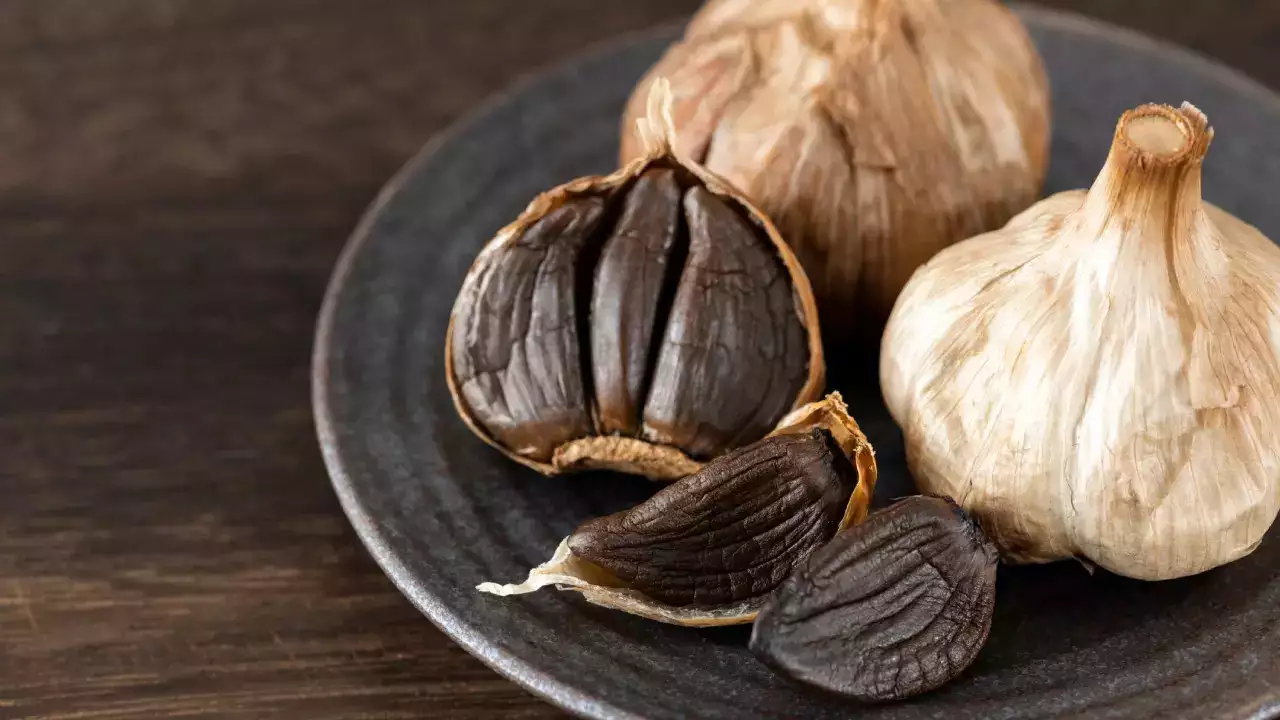Garlic is a culinary cornerstone in many cuisines, prized for its bold aroma and unmistakable taste. Yet, there’s a lesser-known variety that’s turning heads in the food world: black garlic. Though it begins life as regular white garlic, black garlic goes through a specialized aging process that completely transforms its characteristics—making it sweeter, softer, and packed with umami. Curious how it differs from raw garlic? Let’s explore these contrasts in greater detail.
A Brief Overview
Raw Garlic
-
Appearance: Plump, pale cloves wrapped in a papery husk.
-
Flavor Profile: Sharp, spicy, and intensely aromatic.
-
Primary Uses: Raw garlic is a go-to for adding punch in sauces, marinades, and just about any savory dish.
Black Garlic
-
Appearance: Deep brown or black cloves with a sticky, jelly-like texture.
-
Flavor Profile: Sweet, mellow, with hints of balsamic vinegar and molasses.
-
Primary Uses: Often used as a flavor enhancer in gourmet recipes, desserts, spreads, and more.
Key Flavor Differences: Sharp Intensity vs. Sweet Subtlety
Raw Garlic’s Signature Punch
-
Pungency: Raw garlic is known for its fiery bite and lingering aroma, courtesy of sulfur compounds like allicin. This robust, spicy quality can overpower a dish if too much is used.
-
Heat Sensitivity: Cooking raw garlic in high heat (like sautéing) tames its harshness, turning it softer, sweeter, and more approachable. Still, if you’re after strong garlicky notes, fresh, uncooked garlic delivers.
Black Garlic’s Umami Depth
-
Sweet and Mild: Through weeks of controlled heating and humidity, black garlic’s sulfuric bite diminishes, replaced by natural sweetness. Think of flavors akin to dates or figs, with a slight tangy backdrop.
-
Complex Aftertaste: Black garlic offers a rich umami punch. This “fifth taste” is why it appears on charcuterie boards, in gourmet sauces, and even desserts—it lends an almost savory caramel tone that’s hard to replicate.
Texture: Crisp Cloves vs. Soft, Sticky Bulbs
Raw Garlic: Firm and Crunchy
-
Structure: The raw cloves are firm, releasing oils when crushed or minced. This structure makes it easy to chop, grate, or press.
-
Culinary Impact: Fresh garlic pieces can add a crunchy texture, especially if you toss them in at the end of cooking.
Black Garlic: Soft and Spreadable
-
Transformation Process: Aging for weeks at low temperatures and high humidity alters the clove’s structure. They become dark, soft, and slightly sticky—almost like a dried fruit.
-
Practical Benefits: Thanks to the soft texture, black garlic is easy to mash into sauces, spreads, or dressings. You can even smear it straight onto bread for a quick, flavorful treat.
Culinary Uses: Bringing Out the Best in Dishes
Working with Raw Garlic
-
Sautéing and Roasting: Raw garlic turns sweet and mellow when exposed to heat, making it ideal for soups, stews, and pasta sauces.
-
Raw Preparations: If you want a pronounced kick, use it fresh in dressings, salsas, or guacamole. Beware of its strong aroma—just a clove or two can be enough.
-
Common Dishes: Classic uses include garlic bread, pesto, stir-fries, and myriad global cuisines that rely on raw garlic’s intense flavor.
Working with Black Garlic
-
Flavor Enhancer: Black garlic’s layered sweetness and umami can elevate the complexity of a dish without an overpowering garlic punch.
-
Simple Upgrades: Mash into a vinaigrette, blend into hummus, or mix with butter to create a unique compound butter. It’s also a standout addition to aiolis and creamy sauces.
-
Innovative Pairings: Chefs have experimented with black garlic in desserts (like chocolate truffles) to add a subtle, unexpected depth. It also shines as a garnish on gourmet pizzas, charcuterie boards, and cheese plates.
Nutritional and Health Highlights
-
Raw Garlic:
-
Loaded with vitamins C and B6, plus minerals like manganese and selenium.
-
Allicin, a sulfur compound, is credited with antibacterial and antiviral properties.
-
Potential heart and immune system benefits when consumed regularly, though the pungent taste can limit how much you might eat.
-
-
Black Garlic:
-
The aging process increases certain beneficial compounds, including S-allylcysteine (SAC), believed to enhance the absorption of allicin.
-
Boasts higher antioxidant levels compared to raw garlic.
-
Studies suggest it may aid in reducing inflammation, supporting cardiovascular health, and boosting the immune system.
-
Milder taste encourages some people to consume more per serving—potentially amplifying health benefits.
-
Choosing Which Garlic to Use
So, raw garlic or black garlic—does one trump the other?
-
Flavor Preference: If you love bold, spicy tastes, raw garlic is irreplaceable. For a milder, sweet-savory twist, black garlic has the edge.
-
Cooking Context: Raw garlic can add punch to robust dishes that can handle its intensity. Black garlic works best in recipes that benefit from gentle, complex sweetness or where a subtle umami depth is desired.
-
Health Goals: Both contain beneficial nutrients, but black garlic’s higher antioxidant content and friendlier taste might help you eat more of it.
Ultimately, there’s no wrong answer—just different uses for each. Experimentation is key to discovering your own personal garlic preferences.
Final Thoughts
Garlic in any form offers incredible flavor and impressive health benefits. While raw garlic is the classic choice for that unmistakable kick, black garlic brings something new and exciting to the table—literally. With its soft texture, sweet notes, and hefty dose of umami, black garlic is well worth exploring, whether you’re cooking at home or ordering at a top-tier restaurant.
The next time you see black garlic in a recipe (or spot it at a specialty market), don’t be shy—try it out and see how it elevates your dishes. And remember, if you’re craving that powerful garlic punch, you can’t beat the classic raw clove. In the world of garlic, variety is the spice of life.

Comments (0)
No comments yet. Be the first to comment!